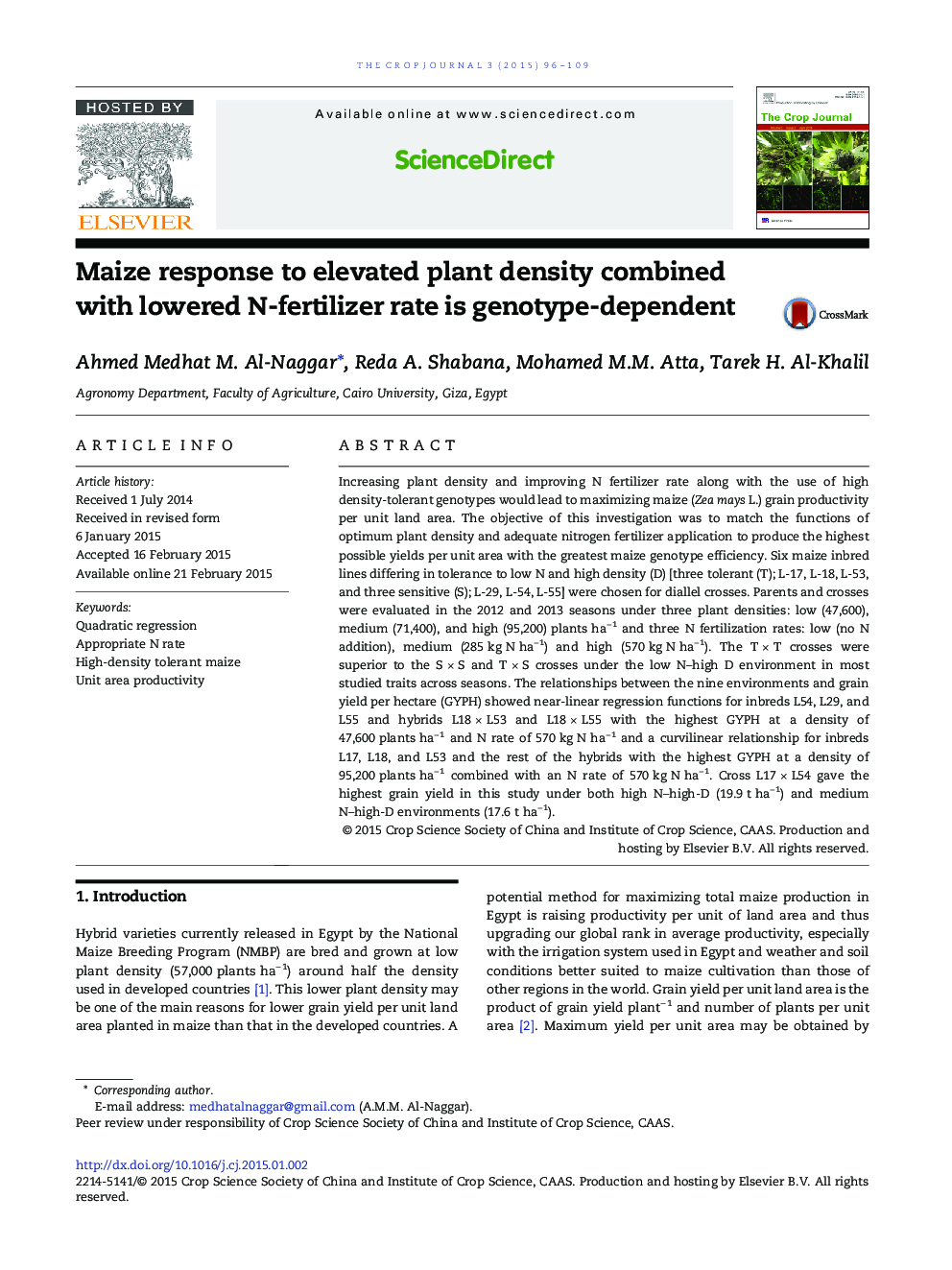| Article ID | Journal | Published Year | Pages | File Type |
|---|---|---|---|---|
| 2079482 | The Crop Journal | 2015 | 14 Pages |
Increasing plant density and improving N fertilizer rate along with the use of high density-tolerant genotypes would lead to maximizing maize (Zea mays L.) grain productivity per unit land area. The objective of this investigation was to match the functions of optimum plant density and adequate nitrogen fertilizer application to produce the highest possible yields per unit area with the greatest maize genotype efficiency. Six maize inbred lines differing in tolerance to low N and high density (D) [three tolerant (T); L-17, L-18, L-53, and three sensitive (S); L-29, L-54, L-55] were chosen for diallel crosses. Parents and crosses were evaluated in the 2012 and 2013 seasons under three plant densities: low (47,600), medium (71,400), and high (95,200) plants ha− 1 and three N fertilization rates: low (no N addition), medium (285 kg N ha− 1) and high (570 kg N ha− 1). The T × T crosses were superior to the S × S and T × S crosses under the low N–high D environment in most studied traits across seasons. The relationships between the nine environments and grain yield per hectare (GYPH) showed near-linear regression functions for inbreds L54, L29, and L55 and hybrids L18 × L53 and L18 × L55 with the highest GYPH at a density of 47,600 plants ha− 1 and N rate of 570 kg N ha− 1 and a curvilinear relationship for inbreds L17, L18, and L53 and the rest of the hybrids with the highest GYPH at a density of 95,200 plants ha− 1 combined with an N rate of 570 kg N ha− 1. Cross L17 × L54 gave the highest grain yield in this study under both high N–high-D (19.9 t ha− 1) and medium N–high-D environments (17.6 t ha− 1).
